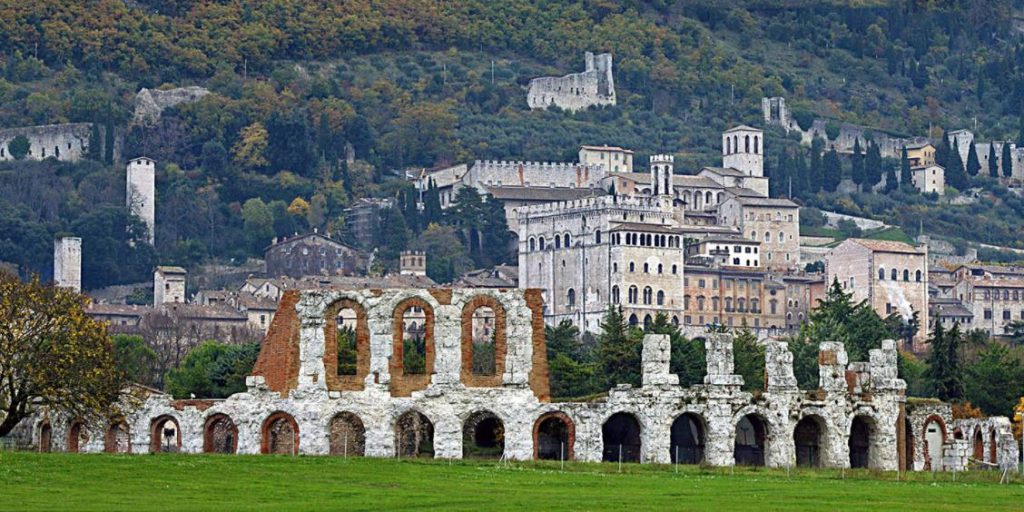Haunted Tree Swindle in Italy November 9, 2017
Author: Beach Combing | in : Modern , trackbackThis story appeared in a British newspaper in September of 1861. It relates to Gubbio in Umbria: the unity of Italy has just happened.
A rural parish in the region of Agubbio, which was relieved last year of the Pope’s temporal rule, but which still endures the evils of ignorance and superstition consequent on many ages of ecclesiastical dominion, has become the scene of a curious trick. There was a hollow oak tree regarded by devout people with as much veneration as ever could have been paid to it by the ancient Druids, and all because the virgin Mary had often been seen looking out of a large round hole in its trunk. This attribution of sanctity the old hollow tree, supposed to be one of the ubiquitous Madonna’s favourite abodes, was countenanced by the preaching friars, if not by the local clergy, and many precious little gift, according to the wealth of the humble givers, many a woman’s ear-rings or shawl, many savoury morsel, was let down solemnly into the cavity of this all-devouring haunted oak.
This would be interesting, but the twist makes it fascinating.
A gentleman who knew better having come that way on official business, remonstrated, reasoned, and ridiculed in vain. He offered large wages to any labourers who would cut down the tree so as to expose this pernicious and wasteful delusion, but no woodman dared lend his axe for the sacrilegious job, and it was performed at length by the hands of two or three brave Piedmontese soldiers, who were always taught to read and write in their regimental schools.
Again in 1861 Italy had just united. The ‘Piedmontese’ were the uniters and were often billed, in texts from the period, as the heroes of civilization. What comes next is completely unexpected.
The soil beneath was found to be burrowed out in kind of tunnel leading to the subterranean dwelling, where sat the surprised master of this ingeniously constructed shrine, he was a man between 40 and 50 years of age, unknown in the district, and who would give no account of himself; I believe that his head was not marked by the tonsure of the clerical profession. A great heap of valuables, like that piled up in Spenser’s Cave of Mammon, allowing for the poverty of the surrounding villagers, lay stored up in the crafty hermit’s den. The supernatural instrument of his deception was also at hand there, consisting of an image, or doll, not much uglier or more unlikely than the celebrated figure displayed each Christmas season at the Capitoline Church of Ara Coeli [!], to the amazement of pious and simple folk. Whatever might have been said to it at Rome, this imposture, once detected, could obtain no mercy in the rustic community, where a dawn of good sense, now that the priests no longer reign paramount, begins to enlighten the better class of minds. The cunning Druid, along with his factitious Queen of Heaven, was specially dragged to the surface, and, mounted on a donkey, was compelled to pass through a regular Charivari, or what Devonshire people call a skimmiting-riding,… and the villagers themselves exulted in the public repudiation and punishment of this impudent cheat..
So a happy ending. Wonder if it is true: drbeachcombing At gmail DOT com



